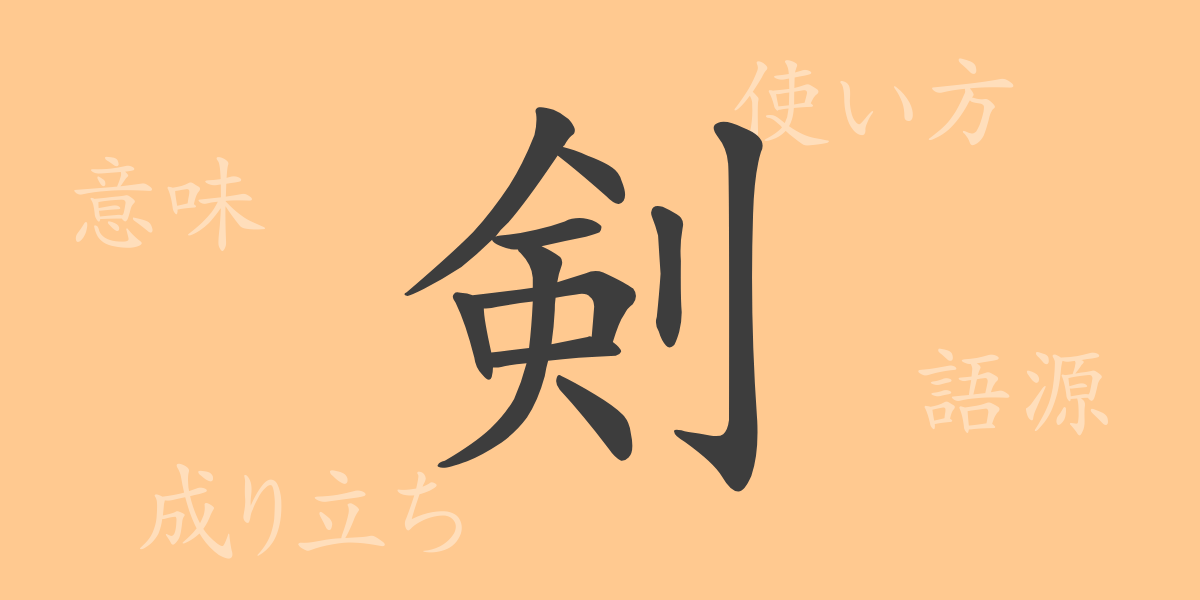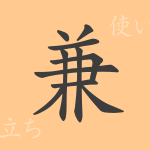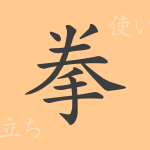Deeply rooted in Japanese culture and a symbolic presence throughout history, the kanji “剣” (つるぎ, tsurugi) is beloved by many. This article delves into the allure of the commonly used kanji “剣,” exploring its origins, meanings, usages, readings, and related idioms and proverbs. Let’s step into the world of the sword and uncover its profound historical and cultural significance together.
Origin of 剣
The journey to uncover the origin of “剣” (つるぎ, tsurugi) begins in ancient China. Originally written as “劍,” it symbolically represented the shape of the weapon. In Japan, artifacts from the Kofun to the Nara period have confirmed its presence, signifying both the soul of the samurai and a symbol of power. Over time, the sword evolved from being a mere weapon to embodying spirituality and aesthetics.
Meaning and Usage of 剣
The kanji “剣” (つるぎ, tsurugi) initially referred to a handheld weapon, specifically swords and blades. It also metaphorically represents conflict and combat. Additionally, it is used to signify sharp criticism or cutting words. As an adjective, phrases like “剣のように鋭い” (けんのようにするどい, ken no you ni surudoi) describe sharpness or strength in various contexts.
Readings, Stroke Count, and Radical of 剣
The kanji “剣” (つるぎ, tsurugi) is widely used in Japanese as a common kanji. Here are its details:
- Readings: On’yomi – ケン (けん, ken); Kun’yomi – つるぎ (つるぎ, tsurugi)
- Stroke count: The kanji “剣” consists of 10 strokes.
- Radical: The radical is “刀” (かたな, katana), which is common in kanji related to swords and blades.
Idioms, Proverbs, and Phrases Using 剣
Japanese has numerous idioms, proverbs, and phrases that include “剣” (つるぎ, tsurugi). Here are a few examples:
- 剣幕 (けんまく, kenmaku): A phrase indicating an angry demeanor or a forceful attitude.
- 剣呑 (けんのん, kennon): Describes a situation that is extremely dangerous or tense.
- 剣の舞 (つるぎのまい, tsurugi no mai): Literally meaning “sword dance,” it also metaphorically depicts a majestic and vigorous performance.
- 剣を交える (つるぎをまじえる, tsurugi o maji eru): Means to engage in direct confrontation or to have a heated debate.
Conclusion About 剣
In Japan, the kanji “剣” (つるぎ, tsurugi) transcends its physical form as a weapon to symbolize spirituality, aesthetics, and the power of words. Its readings, meanings, and usages reveal its multifaceted nature, making it an indispensable element in understanding Japanese language and culture. Through this article, we hope you have gained a deeper appreciation of the rich background and influence of “剣” in the Japanese lexicon.

























